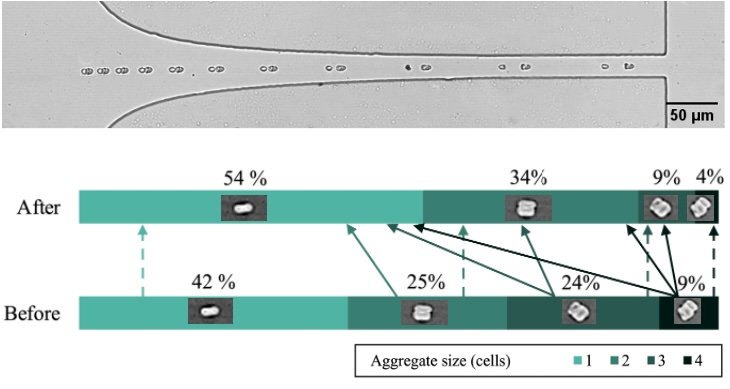- Share
- Share on Facebook
- Share on X
- Share on LinkedIn
Publication / Research
On July 29, 2024

New publication in Physical Review Fluids
Blood rheology and microcirculation are strongly influenced by the aggregation of red blood cells. Researchers at the LRP have studied the dissociation rates of red blood cell aggregates in extensional flow using a microfluidic device of hyperbolic constrictions producing constant elongation and an image analysis technique based on artificial intelligence. The results show that the dissociation of aggregates increases significantly when a critical rate of extension is reached, which is within the range of stresses encountered in the microcirculation. This suggests that significant variations in aggregate size can be expected in capillaries in vivo as a function of blood parameters. This work contributes to a better understanding of the blood microcirculation and the response of red blood cell aggregates to hydrodynamic constraints. The experimental principle established in this study provides a new method for assessing the aggregability of red blood cells that could potentially be used in a clinical context.
Reference :
M. Puthumana Melepattu, G. Maîtrejean, T. Podgorski, Dissociation of red blood cell aggregates in extensional flow, Physical Review Fluids 9, L071101 (2024)
Date
- Share
- Share on Facebook
- Share on X
- Share on LinkedIn